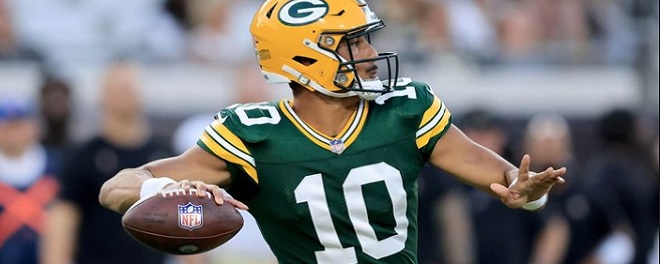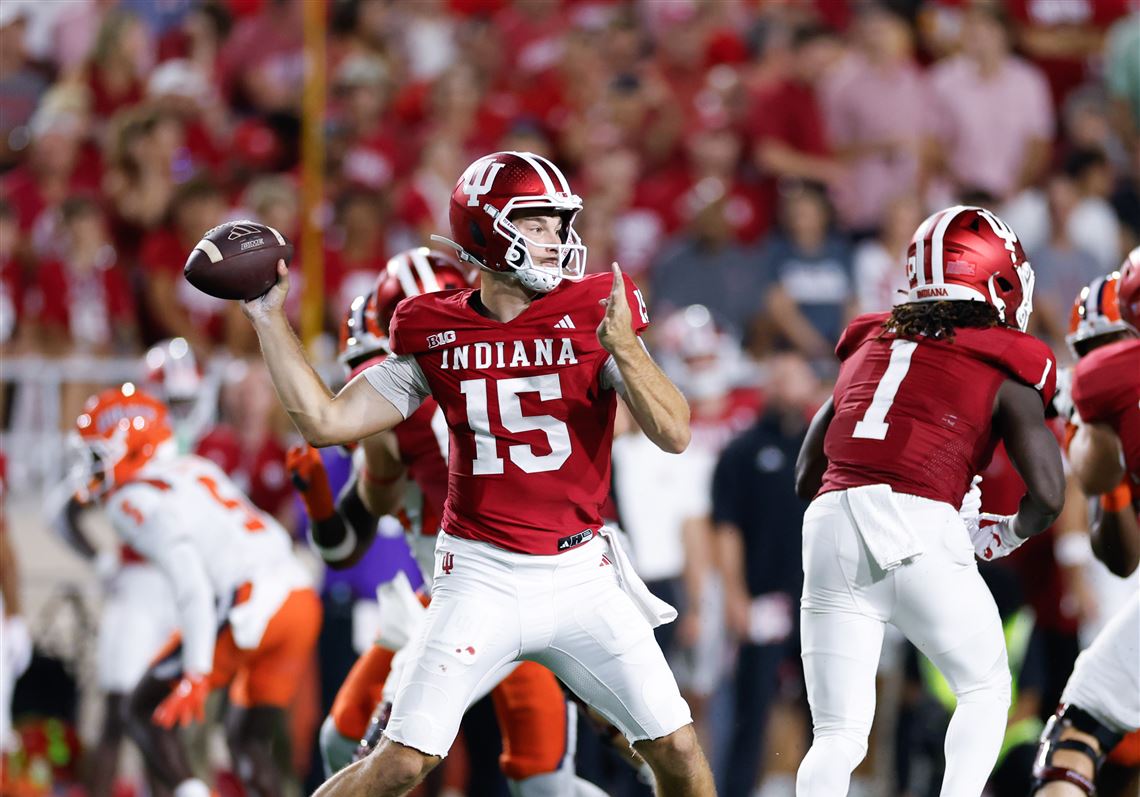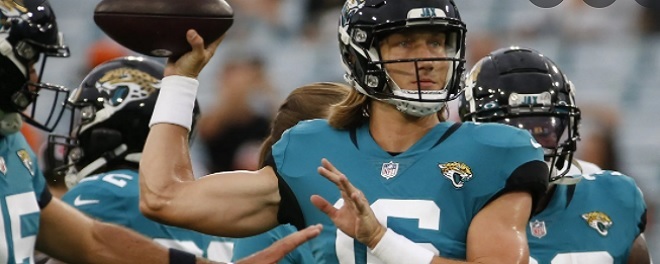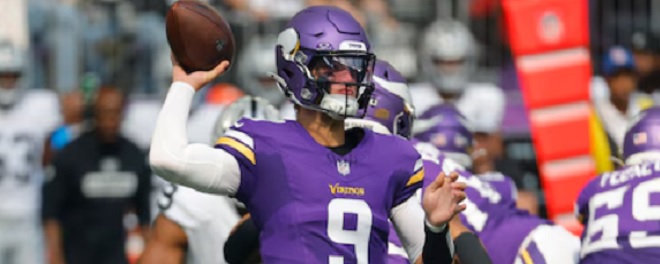Solid Starter
 Teven Jenkins, OT, Oklahoma State – Round 2
Teven Jenkins, OT, Oklahoma State – Round 2 
The Bears had big needs on the offensive line entering the 2021 NFL Draft, and after taking a raw quarterback in Justin Fields, they really had to improve their line talent to help their young franchise quarterback. The 6-foot-6, 320-pound Jenkins has a good skill set, and following some adjustment to the NFL, he could turn into a quality starter.
Jenkins is a reliable contributor in the ground game, using strong upper body to tie up defenders. He is able to twist and manipulate opponents, turning them away or pushing them out of their gaps. Firing to the second level or going out to the flat on a kick out block, Jenkins gets in position with his quickness and athleticism, showing a nice ability to be effective in space. As a run blocker, Jenkins would be a fine fit in a power man- or a zone-blocking scheme. He is a fighter with a physical demeanor.
As a pass blocker, Jenkins is a good athlete on the edge with quickness and length. He uses his upper and lower body strength to hold his ground on bull rushes, with his size helping him to have nice recoverability. Jenkins’ power and strength helps him do a nice job of stopping rushes after they defenders manage some initial penetration upfield, and that gives his quarterback adequate time to get the ball out. Jenkins sustains blocks well and has strong hands to tie up defenders.
Jenkins possesses good enough quickness and feet to be a candidate for remaining at right tackle as a pro, but he might be more dominant and a better fit at guard. He can get his feet crossed up at times in pass protection, and that leads to him not being able to mirror rushers or play the typewriter with his feet. Sometimes, he will bend at the waist and lunge after defenders rather than bend at the knee to glide into position to wall off the rush lane. If moved inside to guard, the footwork issue would be diminished, plus he could be a really good fit there. Jenkins already has the power and strength to handle heavy defensive tackles yet retains the quickness to take on speed rushers.
The Bears traded up for Jenkins in the second round and were a mixed landing spot for him. On the positive side, Jenkins looks like an immediate starter because Chicago needs new starters immediately. The Bears, however, are bucking the thoughts of the scouting community by moving Jenkins to left tackle. That will make his job harder as a rookie, as he will see the best edge rusher who other teams have to offer on a weekly basis. That challenge could easily lead to Jenkins struggling somewhat in 2021, and it will be interesting to see how he responds to the adversity. With the Bears, Jenkins will get every opportunity to play. It will be up to their coaches to develop him well, while Jenkins will have to work hard and stay resilient to pan out in the NFL.
Even if Jenkins doesn’t work out as a left tackle, he could be a good guard or right tackle for Chicago. After some coaching, development, learning the league, and settling in at his long-term position, Jenkins could be a quality starter in a franchise that has had a lot of great offensive linemen.
2020: Cole Kmet, TE
2019: Riley Ridley, WR
2018: James Daniels, C
2017: Eddie Jackson, S
2016: Jonathan Bullard, DE
2015: Eddie Goldman, DT
2014: Kyle Fuller, CB
2013: Jonathan Bostic, LB
Most Likely To Bust
 None
NoneThe Bears did not have picks in the third and fourth round. Picks after the third round are just expected to be backups and/or special teams contributors, so they cannot really be true busts if they don’t stick in the NFL. I don’t think either Justin Fields or Teven Jenkins is likely to bust.
2020: None
2019: David Montgomery, RB
2018: Joel Iyiegbuniwe, LB
2017: Mitch Trubisky, QB
2016: Cody Whitehair, G
2015: Hroniss Grasu, C
2014: Ka’Deem Carey, RB
2013: Kyle Long, G
Potential Boom Pick
 Justin Fields, QB, Ohio State – Round 1
Justin Fields, QB, Ohio State – Round 1 
The Bears franchise has been known for great running backs and defenses, but the team has never had a storied history of elite quarterbacks. Chicago general manager Ryan Pace made an all-time awful quarterback evaluation a few years ago when he traded up for Mitch Trubisky while passing on Pat Mahomes and Deshaun Watson. Pace was fortunate he wasn’t get fired for that epic mistake, but given the trade up for Fields, he may have learned from that horrible evaluation. There are a lot of similarities between Fields and Watson coming out of college – along with similar points of improvement. If the Bears support Fields and develop him, I think he could become of the top quarterbacks in franchise history.
As a passer, Fields (6-3, 228) has a lot of ability for the next level. He can throw the ball accurately, showing rhythm and anticipation. Consistently, Fields locates his passes well, placing them in position for his receiver to make the catch and pick up additional yards. Fields has a quality arm and can push the ball vertically, but he does not just fire fastballs, as he throws a very catchable ball. Fields demonstrates good feel, lofting in touch passes and throwing flat. He is an aggressive quarterback who challenges defenses downfield. Fields will need to learn to utilize his check downs more as a pro, however, because not using those open options led to numerous poor decisions in 2020
Overall, Fields does a good job of protecting the football and avoiding interceptions. He typically makes good decisions, and with his ability to locate the ball, he does not regularly provide a defense with the opportunity to take the ball away. Fields does a nice job of moving his eyes while scrambling and is cognizant to look downfield for receivers uncovering. When he gets rattled by blitzes though, he can drop his eyes. For the most part, Fields does a respectable job of seeing the field while moving. He also throws accurately on the run.
In terms of his ability on the ground, Fields looks like Deshaun Watson in terms of shiftiness, quick feet, and elusiveness. Fields will juke and dodge defenders in embarrassing fashion with his burst to accelerate into space. On top of his feet and quickness, Fields has a sturdy build that gives him the strength to create a push in short-yardage situations. In the NFL, Fields won’t be a runner like Lamar Jackson, but his mobility could be similar to Watson’s or Dak Prescott’s.
There are definitely some major areas for improvement for Fields for the NFL. He has to improve his pocket awareness and not panic with the rush bearing down on him. Fields can get rattled by the pass rush, and blitzes can cause him to freeze in the pocket. Improving his ability to pass from the pocket while under heavy pressure is the No. 1 aspect that Fields must improve upon for the NFL.
Fields is raw and enters the league having only started one and half seasons, so some of his developmental issues are understandable. Considering his limited experience as a starter, his field vision has a good starting point, but it needs to improve for the NFL. Fields needs to speed up the process to work through his progressions and be quicker at reading coverage. He won’t have as much time in the pocket in the NFL compared to what he has at Ohio State. Fields can hold the ball too long sometimes, and he got away with it because of the competition. There were also plays where he needed to take the short completion to open underneath receivers or the check down rather than forcing riskier throws downfield. Related to the vision, Fields needs to improve his knowledge of defenses and blitz recognition. He can have problems when facing heavy pressure and can get rattled by blitzes – see Clemson in 2019 and Indiana and Northwestern in 2020. NFL teams will blitz him heavily until he shows he can burn the blitz. Fields should be able to improve on all of these issues with more experience and coaching.
With his skill set and passing ability, Fields has the tools to be a franchise quarterback and a good NFL starter. My biggest worry with him not panning out is that he won’t receive good coaching and development from the Bears and/or they don’t support him with a quality line or receivers. If Chicago coaches him well and gives him talent to work with, I think Fields could be a boom pick.
2020: Jaylon Johnson
2019: None
2018: Roquan Smith, LB
2017: Adam Shaheen, TE
2016: Leonard Floyd, LB
2015: Kevin White, WR
2014: Will Sutton, DT
2013: Khaseem Greene, LB
Future Depth Player
 Khalil Herbert, RB, Virginia Tech – Round 6
Khalil Herbert, RB, Virginia Tech – Round 6 
As a late-round pick, Herbert is not expected to become a starter. Chicago also has its top backfield tandem with David Montgomery and Tarik Cohen, but considering both of those players have had issues with injuries, Herbert could be a quality third back to provide some depth. Herbert had a nice 2020 season and showed the ability to carry an offense. He may never be a starter, but he has the skill set to be a solid backup and special teams contributor.
2020: Trevis Gipson, DE
2019: Kerrith Whyte, DL
2018: Bilal Nichols, DL
2017: Tarik Cohen, RB
2016: Nick Kwiatkoski, LB
2015: Jeremy Langford, RB
2014: David Fales, QB
2013: Cornelius Washington, DE
Walt’s 2021 NFL Draft Grades:
11. Justin Fields, QB, Ohio State – A+ Grade
The Bears had to make this move. Andy Dalton was their projected starter entering the 2021 season, and there’s no way they could have sold their fans and players on that. They couldn’t waste a great defense or Allen Robinson any further. I imagine they’re absolutely shocked that Justin Fields is still on the board. He’s arguably the second-best quarterback in this class. For my money he is, so I must grade this as an A+.
39. Teven Jenkins, OT, Oklahoma State – A Grade
I mocked Teven Jenkins to the Bears at No. 20 in one of my final updates, so I obviously love this value with Teven Jenkins. I also love the pick because the Bears absolutely had to protect Justin Fields. Their offensive line has been in severe decline in recent years, so that seems to be changing.
151. Larry Borom, OT/G, Missouri – C+ Grade
Larry Borom was announced as a tackle, but I think he’ll have to move to guard in the NFL. This is just fine because the Bears drafted Teven Jenkins and have a need at guard. This is a bit of a reach, but now that we’ve entered the fifth round, that doesn’t matter too much.
217. Khalil Herbert, RB, Virginia Tech – A- Grade
Khalil Herbert was slotted in the fourth round of my mock draft. I definitely like this value. Herbert could end up being a solid backup for David Montgomery, which is something the Bears lacked last year with Tarik Cohen injured.
221. Dazz Newsome, WR, North Carolina – B Grade
The Bears might have made this pick with trading Anthony Miller in mind. Dazz Newsome is a limited athlete, and he best projects as a replacement for Miller, who has been the subject of trade rumors. Newsome makes sense in this range.
228. Thomas Graham, CB, Bears – B+ Grade
I’m surprised the Bears waited this long for a cornerback, given that they needed two players at the position as the result of Kyle Fuller and Bryce Callahan leaving for Denver across several offseasons. I slotted Thomas Graham 40 picks prior to this, so I like the value.
250. Khyris Tonga, NT, BYU – B Grade
Khyris Tonga nearly made the cut in my mock draft. He’s a monstrous and strong nose tackle who could fight for playing time if there are injuries in the interior of Chicago’s defensive line.
2021 NFL Draft Team Grade: A+. Follow Walter @walterfootball for updates.
Chicago Bears Season Preview
NFL Power Rankings - Dec. 16
NFL Picks - Dec. 15
2026 NFL Mock Draft - Dec. 10
Fantasy Football Rankings - Sept. 1




